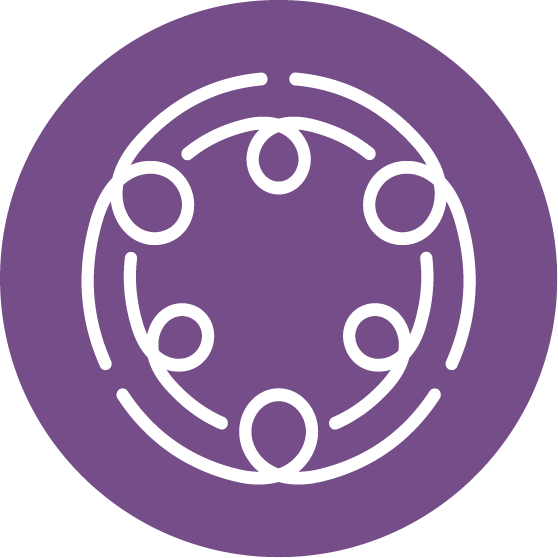Choosing Effectiveness as a Family

Effectiveness is a universal aspiration in philanthropy. It is ongoing and iterative, but it begins with making a choice. As our colleagues at the Center for Effective Philanthropy note, effectiveness requires four mutually reinforcing elements: goals, strategies, implementation, and assessment and learning. For family philanthropies, questions of effectiveness go even deeper. How do you build consensus with your family? How do you evolve your beliefs and practices as a family? The complexity of this dynamic has its challenges, yet it presents an enormous opportunity to not only fund the change you seek, but to model it by effectively engaging your families across generations and physical and ideological divides.
The moniker family philanthropy is a self-determination, one defined by the choice to not only consciously commit to effecting meaningful, positive change, but to doing so in partnership with one’s family. This initial decision colors every aspect of your philanthropic efforts moving forward. Not only are you exploring and mutually agreeing upon the approaches and mechanisms necessary to effect that change, you are doing so in a context that is often emotionally charged. Outside of philanthropy, we all have the option to pursue individual interests, distance ourselves from family members who hold different perspectives, and prioritize what we value most. Within family philanthropy, however, the success of the philanthropic effort is predicated on a commitment to the collective. This requires participants in family philanthropy to embrace the multiple dimensions of their identities and understand how they fit into the larger ecosystems of both their family philanthropy and the communities they serve.
We don’t choose our families, but we do choose to practice philanthropy with our family.
To be effective in this context requires navigating personal relationships, current and historic power imbalances, and gaps in knowledge and understanding of issues—all within the larger social and cultural environments family philanthropies operate in. For our field, effectiveness must go beyond healthy funding practices with grantees and the greater communities we serve. It must touch on intra-family dynamics, include family philanthropy staff, and speak to the varied stages within the lifecycle of family philanthropy —from purpose to succession and legacy. Ultimately, effective family philanthropy is rooted in cultural evolution that begins with a stronger and more honest understanding of ourselves: our entrenched beliefs and biases, our connections to the communities we serve, our power and privilege and our dynamics as a family.
Effective family philanthropy makes a collective commitment to meaningful societal change. It holds itself accountable to impact as defined by community, and to the proven practices that support it. It is adaptive, evolving with the family and the community or ecosystem within which it operates. It shares or cedes power with different family members and generations, as well as staff, communities, and grantees.
Effective family philanthropy is an ever-evolving process that is improved over time and that requires frequent checks and adjustments. It advances meaningful outcomes by embodying four core principles: accountability, equity, reflection and learning, and relationships. We view these principles as holding true for guiding both practices within a family as well as with staff, grantees, and community partners. This harmony is what makes effective family philanthropy possible.
In partnership with the field, we’ve developed a guide on effective family philanthropy to help demystify the internal and external practices that promote positive outcomes and prepare families to create meaningful change.
Explore the guide and related resources
The Four Core Principles of Effective Family Philanthropy
 Accountability
Accountability
Family philanthropies hold tremendous power and operate with little oversight. While grantees and community members often call on family philanthropies for greater transparency and accountability, families have the autonomy and agency to heed that call—or ignore it. The choice to be accountable must come from the family itself, and it needs to be rooted in the wisdom of staff and the communities you seek to serve. To foster a culture of accountability in your philanthropy, begin by assessing where voices and perspectives are underrepresented and develop a plan to ensure continuous, meaningful engagement and representation of your family, staff, grantees and community members.
Equity
Philanthropy is born of inequality. It is the direct result of systems that benefit some and intentionally disadvantage others. Despite good intentions, our failure to acknowledge this reality has historically perpetuated inequities and harm. To be effective, families need to gain a deep understanding of their role in this history, the origins of their wealth and ongoing practices that may be perpetuating harm. Equity cannot be relegated to a single part of your philanthropic efforts. It must be woven into principles, policies, and practices and applied internally with family and staff as well as externally with grantees and community members. Your equity journey should include sharing or ceding power (money, positional power, influence, decision making) within the family and with staff and communities to repair inequities. This includes hiring teams that have the knowledge and lived experience to advance change in the issues you are tackling.
 Reflection & Learning
Reflection & Learning
Many family philanthropy trustees are part-time decision makers tasked with making complex and consequential decisions. Regardless of the amount of time one is able to commit to the organization, it is crucial to dedicate the necessary resources to individual and organizational reflection and learning. No one has all the answers, so it’s important to be aware of the gaps in your knowledge and actively seek to learn from people with lived experience in the issues your philanthropy addresses. For trustees in particular, this includes intergenerational learning, listening to and learning from staff and thinking strategically about how community members and grantees can be learning partners to the philanthropy. When done well, family philanthropy is iterative, it’s a process of ongoing learning and unlearning. Start by creating and reinforcing a culture of learning. Reward curiosity and provide a safe environment for constructive feedback, respectful dissent, and learning from mistakes. Be mindful of who you learn from to ensure you are not inadvertently replicating or exacerbating power imbalances or confirmation bias.
 Relationships
Relationships
The founding premise of philanthropy is a love of people, and we value the people involved in and impacted by our philanthropy by establishing and nurturing healthy relationships. Be conscious of existing power dynamics and seek to break those down, both between grantmaking staff and grantseekers and in hierarchical generational practices within the family. Get closer and build empathetic relationships marked by equity, grace, and humility to build trust, learn, and maintain an open dialogue. Be a partner who listens with openness and humility. Ask what is needed and how you can help. Employ tools and frameworks such as trust-based philanthropy to authentically build relationships with and listen to communities.
Choose effectiveness
Effective family philanthropy has the power to support lasting change in our communities. If you’re reading this, you’ve likely made a conscious decision to be part of a family philanthropy system. Our ask of you is a simple but important one: choose effectiveness. Use the power and agency afforded to you to advance meaningful change. Choose to act on what you’re learning and apply new insights and practices, which are vital to maximizing your impact. This work requires a posture of humility, openness, and critical assessment—but it’s not work you have to do alone. The NCFP community exists to support you at every step of the way. So what choices will you make to be effective?
